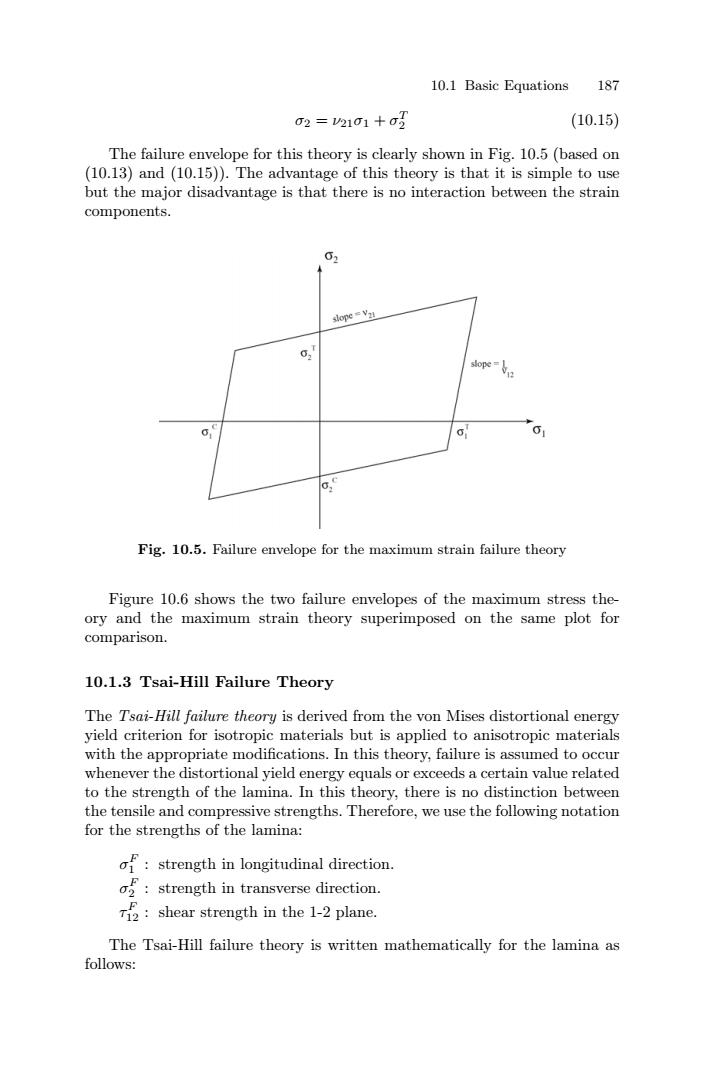正在加载图片...

10.1 Basic Equations 187 02=2101+o (10.15) The failure envelope for this theory is clearly shown in Fig.10.5 (based on (10.13)and (10.15)).The advantage of this theory is that it is simple to use but the major disadvantage is that there is no interaction between the strain components. 02 slope Va stope-2 o.c Fig.10.5.Failure envelope for the maximum strain failure theory Figure 10.6 shows the two failure envelopes of the maximum stress the- ory and the maximum strain theory superimposed on the same plot for comparison. 10.1.3 Tsai-Hill Failure Theory The Tsai-Hill failure theory is derived from the von Mises distortional energy yield criterion for isotropic materials but is applied to anisotropic materials with the appropriate modifications.In this theory,failure is assumed to occur whenever the distortional yield energy equals or exceeds a certain value related to the strength of the lamina.In this theory,there is no distinction between the tensile and compressive strengths.Therefore,we use the following notation for the strengths of the lamina: of:strength in longitudinal direction. strength in transverse direction. 712:shear strength in the 1-2 plane. The Tsai-Hill failure theory is written mathematically for the lamina as follows:10.1 Basic Equations 187 σ2 = ν21σ1 + σT 2 (10.15) The failure envelope for this theory is clearly shown in Fig. 10.5 (based on (10.13) and (10.15)). The advantage of this theory is that it is simple to use but the major disadvantage is that there is no interaction between the strain components. Fig. 10.5. Failure envelope for the maximum strain failure theory Figure 10.6 shows the two failure envelopes of the maximum stress theory and the maximum strain theory superimposed on the same plot for comparison. 10.1.3 Tsai-Hill Failure Theory The Tsai-Hill failure theory is derived from the von Mises distortional energy yield criterion for isotropic materials but is applied to anisotropic materials with the appropriate modifications. In this theory, failure is assumed to occur whenever the distortional yield energy equals or exceeds a certain value related to the strength of the lamina. In this theory, there is no distinction between the tensile and compressive strengths. Therefore, we use the following notation for the strengths of the lamina: σF 1 : strength in longitudinal direction. σF 2 : strength in transverse direction. τ F 12 : shear strength in the 1-2 plane. The Tsai-Hill failure theory is written mathematically for the lamina as follows: